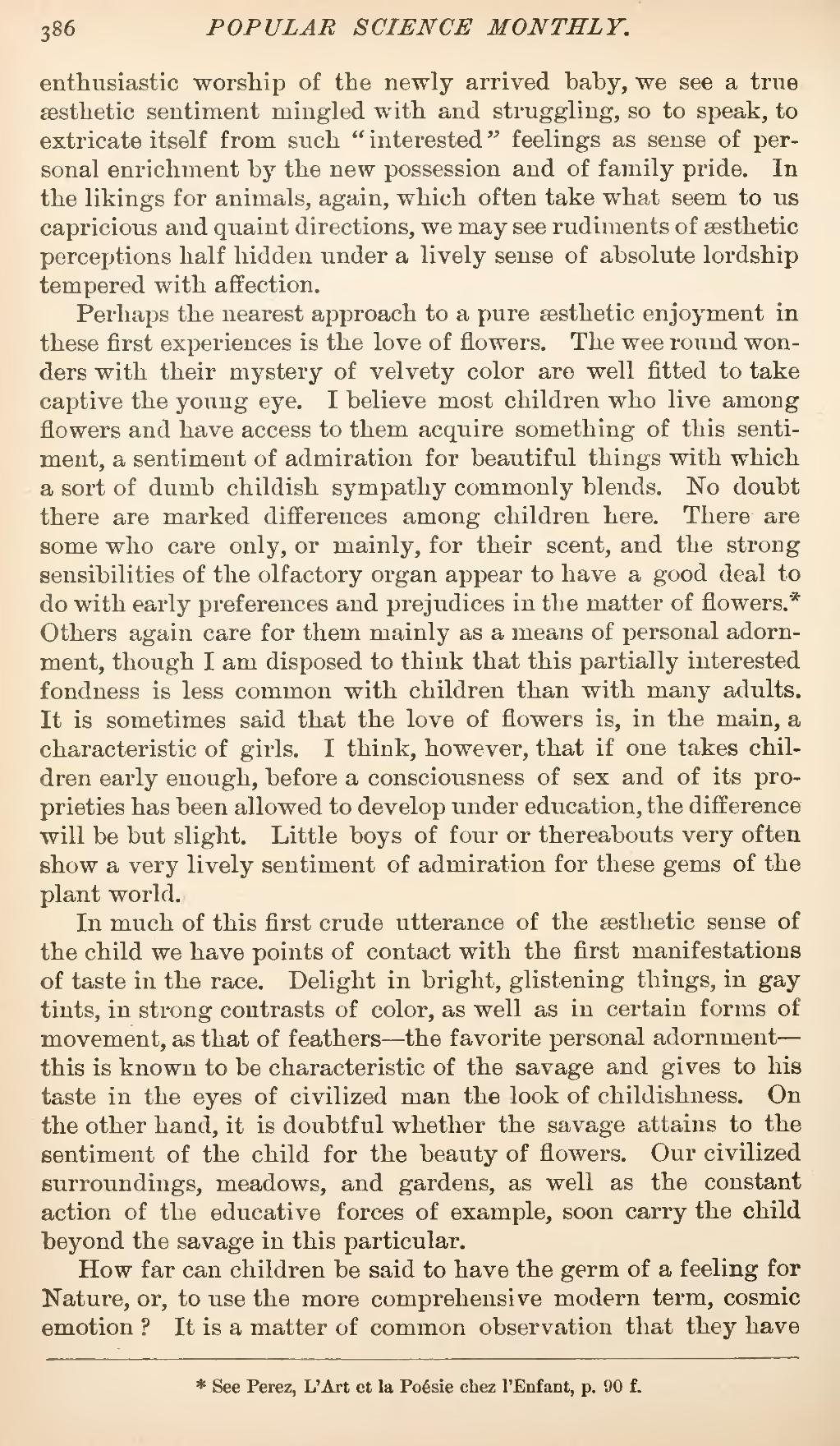enthusiastic worship of the newly arrived baby, we see a true æsthetic sentiment mingled with and struggling, so to speak, to extricate itself from such "interested" feelings as sense of personal enrichment by the new possession and of family pride. In the likings for animals, again, which often take what seem to us capricious and quaint directions, we may see rudiments of æsthetic perceptions half hidden under a lively sense of absolute lordship tempered with affection.
Perhaps the nearest approach to a pure æsthetic enjoyment in these first experiences is the love of flowers. The wee round wonders with their mystery of velvety color are well fitted to take captive the young eye. I believe most children who live among flowers and have access to them acquire something of this sentiment, a sentiment of admiration for beautiful things with which a sort of dumb childish sympathy commonly blends. No doubt there are marked differences among children here. There are some who care only, or mainly, for their scent, and the strong sensibilities of the olfactory organ appear to have a good deal to do with early preferences and prejudices in the matter of flowers.[1] Others again care for them mainly as a means of personal adornment, though I am disposed to think that this partially interested fondness is less common with children than with many adults. It is sometimes said that the love of flowers is, in the main, a characteristic of girls. I think, however, that if one takes children early enough, before a consciousness of sex and of its proprieties has been allowed to develop under education, the difference will be but slight. Little boys of four or thereabouts very often show a very lively sentiment of admiration for these gems of the plant world.
In much of this first crude utterance of the æsthetic sense of the child we have points of contact with the first manifestations of taste in the race. Delight in bright, glistening things, in gay tints, in strong contrasts of color, as well as in certain forms of movement, as that of feathers the favorite personal adornment—this is known to be characteristic of the savage and gives to his taste in the eyes of civilized man the look of childishness. On the other hand, it is doubtful whether the savage attains to the sentiment of the child for the beauty of flowers. Our civilized surroundings, meadows, and gardens, as well as the constant action of the educative forces of example, soon carry the child beyond the savage in this particular.
How far can children be said to have the germ of a feeling for Nature, or, to use the more comprehensive modern term, cosmic emotion? It is a matter of common observation that they have
- ↑ See Perez, L'Art et la Poésie chez l'Enfant, p. 90 f.
